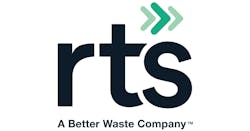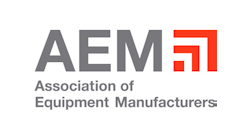The construction industry generates hundreds of millions of tons of waste yearly. It is expected to nearly double by 2025, which makes investing in green, sustainable construction methods essential. Fortunately, the majority of construction waste consists of steel, concrete, and brick, all of which can be recycled and repurposed. Of course, for that to happen, the proper infrastructure and policies need to be in place.
If you want your construction project to be sustainable, you need a framework to adhere to. In this article, we will take a look at LEED: the most widely used green building rating system in the world. We will explore how LEED handles construction waste and what you need to do for your project to be compliant.
What Is LEED?
Leadership in Energy and Environmental Design (LEED) is a rating and certification system. It applies to the interior, exterior, residential, and commercial construction projects of all sizes. LEED aims to proliferate green buildings that are both energy-efficient and cost-effective while keeping the environment in mind. The system works based on a variety of credits and points that can be accumulated throughout a project.
Some credits are mandatory and do not contribute points, as they are the bare minimum. Other credits award you a certain amount of points, which count towards the total you need for LEED certification. Certificates differ, depending on the points accumulated, and range from “LEED Certified” to the prestigious “Platinum LEED Certification.”
Construction Waste Management in LEED
Construction waste management is one of the most important components of the LEED framework. Referred to as “Construction and Demolition Waste Management Planning”, it covers a range of criteria that deal with recycling, recovering, and reusing materials. The first step towards completing the LEED requirements is coming up with a comprehensive plan that follows a few key guidelines.
The construction waste management plan needs to outline five structural and nonstructural materials that you will focus on when it comes to diversion. You also need to include the specific methods and strategies you will utilize to achieve your goal. A typical plan will include detailed information on diversion rates, recycling methods, logistics, and sourcing.
Once your plan is ready, you need to commence your construction project and make sure you follow the rules you have set for it. When the work is done, you need to present a report that outlines the results and how effective your execution of the plan was. The report has to include all waste streams generated by your project, along with the achieved disposal and diversion rates. Depending on how well you execute your plan, you will get LEED points that will add up to the amount needed for certification. Also, keep in mind that construction waste management is only one of several categories you need to earn points to get LEED-certified.
Ensuring LEED Compliance for Your Construction Project
While setting up your goals for construction waste management is not an arduous task, achieving them can prove to be a challenge. You need to design every aspect of your project and supply chains with sustainability in mind, which can take considerable effort and resources. In the following paragraphs, we will provide you with practical tips for LEED compliance with your project.
Waste Reduction
The key to minimizing the amount of waste generated by your project is to effectively manage procurement. You need to make sure you do not order more materials than you will end up using. On top of that, you need to be able to send back any leftover materials to your manufacturer. Alternatively, think of an efficient way to reuse them for a different part of your project.
Efficient Material Management
We know that calculating the exact amount of materials you will need for your project is next to impossible. However, you need to have a plan for repurposing any leftover materials. If there is nothing you can do with excess materials, consider selling them to other construction projects or local businesses. As typical construction materials are usually high in demand, you are guaranteed to find an organization that will take the leftover materials off your hands.
If you are feeling particularly charitable, you can also look into donating them to an institution or a local non-profit. Before you begin construction, research the local community and find suitable organizations that will be interested in construction materials.
Optimal Supply Chain
When selecting suppliers for your construction project, you need to factor in their approach to sustainability. Require any prospective suppliers to set their waste management and diversion targets as part of the tender process. You must choose a supplier who is ready to take or buy back any excess materials. They also must agree to provide you with periodic reports on their disposal and diversion rates.
Recycling
In some cases, sending back your excess materials to the manufacturer or reselling them is not possible. Your last option is to recycle them with the help of a local or national organization. You can handle the recycling on-site by implementing guidelines and processes. Also, you need to be careful about setting up sorting procedures, as those are key when it comes to recycling.
Alternatively, you can hire a waste hauling company or a recycling firm that will take care of the job. If you go down that road, you do not need to worry about sorting or logistics, as the company will take care of that for you.
LEED compliance is important for every modern construction project. Getting a certificate will ensure the sustainability and cost-efficiency of your building. Construction waste management is one of the pillars of LEED and it generates many of the points needed for certification. By coming up with a plan and following the advice above, you will ensure that your project gets the most points from that important criteria.


